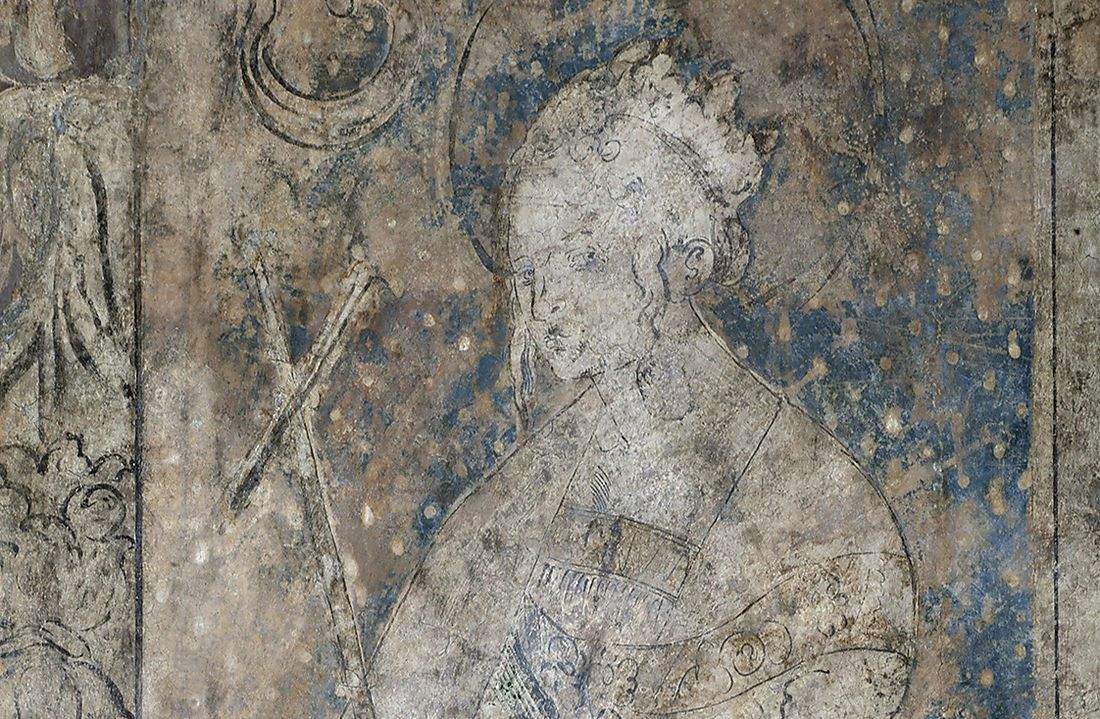Important discovery in Vienna’s St. Stephen’s Cathedral: the Bundesdenkmalamt, the Austrian agency in charge of the country’s monuments, has announced that a fresco that could be ascribed to the hand of Albrecht Dürer (Nuremberg, 1471 - 1528) has emerged following a restoration. The work, painted in the vestibule of the Bischofstor (the “bishop’s door”) of the cathedral, dates back to the early 16th century and is a painted altar, with St. Leopold, the patron saint of Austria, in the central compartment and saints Catherine and Margaret in the side compartments, all ornamented with putti and rich decoration. This was an already known work, but it was undergoing restoration: cleaning conducted by experts from the Bundesdenkmalamt revealed the presence of an underlying drawing, made directly on the wall, which is compatible with Dürer’s style (whose intervention, however, would be limited to the saints in the side compartments). The drawing, which is of high artistic quality, is in an excellent state of preservation and has already been discussed by scholars last November: it was presented to the public for the first time on that occasion, but the news, which in November had known only local circulation, gained international prominence after an article came out a few hours ago in theArt Newspaper.
The institution has initiated a research and protection project to preserve and study the fresco, located in an area of the cathedral that, moreover, was intended as a book and gift store, as typical of many houses of worship, which set up their bookshops in the vestibules of the main doors. In the meantime, a thorough photographic campaign has been conducted, and material samples have already been taken to ascertain the chemical composition of the colors and plaster on which the drawing was traced, which may reveal important information about the work. Further work to attempt to reconstruct the painting’s original state has been ruled out, however, so as not to compromise the work.
The results of the study have yet to be published (a scientific study is to be published in the journal Österreichischen Zeitschrift für Kunst und Denkmalpflege), but experts hired by the Bundesdenkmalamt have already provided some insights. Dürer specialist Erwin Pokorny told the Austrian agency APA-OTS that “the question is not whether Dürer was in Vienna, but when he was there. The virtuosity of the sign clearly shows that the hand is his.” According to art historian Michael Rainer, the work may have been commissioned by Emperor Maximilian I, who allegedly called Dürer to Vienna to “create something important on the wall,” as seventeenth-century historiographer Joachim von Sandrart attests in his biography of Dürer, although no other source reports this episode. We know that Dürer did, indeed, work for Maximilian the First around 1512, but since the work can be dated to around 1505 (thus during the journey that took the painter from Nuremberg to Venice), it is possible that their relationship may have been more enduring. Now, Rainer argues, “perhaps we have found the setting for this anecdote, which until now had been misunderstood and taken as a mere legend.” The president of the Bundesdenkmalamt, Christoph Bazil, thanks the cathedral’s architect, Wolfgang Zehetner, for his cooperation and says, “with the help of the Bundesdenkmalamt it was possible to secure this extraordinary work and present it to the public during the conference.”
Pictured: a portion of the drawing attributed to Dürer. Ph. Credit © Dombauhütte zu St Stephan.
 |
| Vienna, work attributed to Dürer discovered in St. Stephen's Cathedral bookshop |
Warning: the translation into English of the original Italian article was created using automatic tools. We undertake to review all articles, but we do not guarantee the total absence of inaccuracies in the translation due to the program. You can find the original by clicking on the ITA button. If you find any mistake,please contact us.